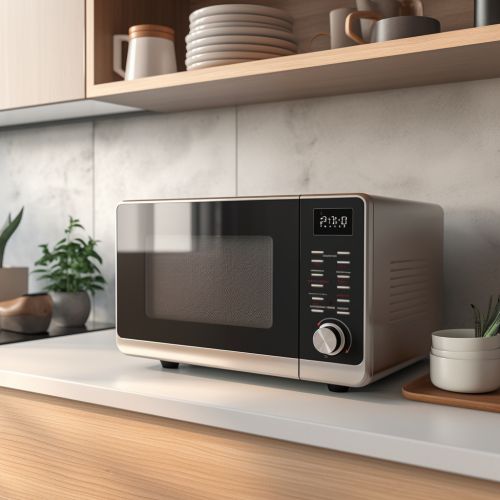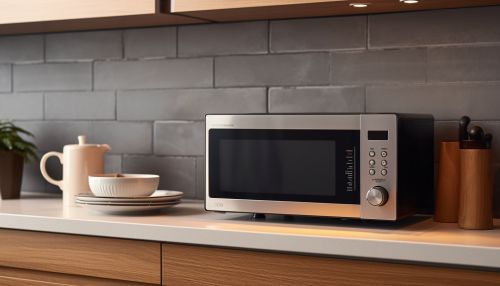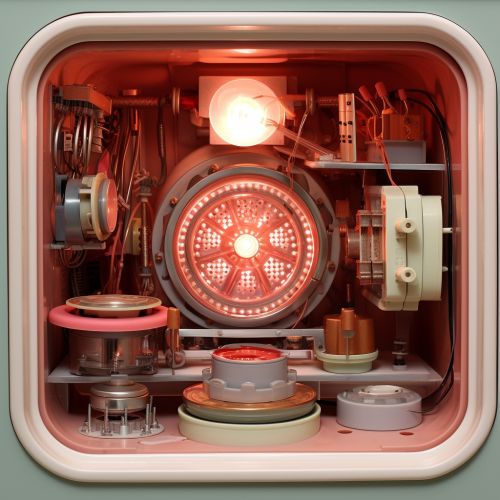Microwave
Introduction
A microwave is an electric oven that heats and cooks food by exposing it to electromagnetic radiation in the microwave frequency range. This induces polar molecules in the food to rotate and produce thermal energy in a process known as dielectric heating.


History
The microwave oven was first invented by Percy Spencer, an American self-taught engineer from Howland, Maine. Employed by Raytheon at the time, he noticed that microwaves from an active radar set he was working on in 1945 had melted a chocolate bar he had in his pocket. The first food deliberately cooked with Spencer's microwave was popcorn, and the second was an egg, which exploded in the face of one of the experimenters.
Principles of Operation
Microwave ovens heat foods quickly and efficiently because excitation is fairly uniform in the outer 25–38 mm (1–1.5 inches) of a dense (high water content) food item; energy is thus wasted heating less dense, dry, or fatty food areas. The microwave frequencies used in microwave ovens are chosen based on regulatory and cost constraints. The first is that they should be in one of the industrial, scientific, and medical (ISM) frequency bands set aside for unlicensed purposes. For household purposes, 2.45 GHz has become the most commonly used frequency.
Design
A microwave oven consists of:
- a high-voltage power source, commonly a simple transformer or an electronic power converter, which passes energy to the magnetron
- a high-voltage capacitor connected to the magnetron, transformer and via a diode to the chassis
- a cavity magnetron, which converts high-voltage electric energy to microwave radiation
- a magnetron control circuit (usually with a microcontroller)


Uses and Advantages
Microwave ovens are frequently used for reheating leftover food, and bacterial contamination may not be repressed if the safe temperature is not reached, resulting in foodborne illness, as with all inadequate reheating methods. While microwave ovens are great time-savers, they also have numerous other advantages. They save energy, are easy to clean, and can defrost food more safely than leaving it out at room temperature.
Health and Safety
The high electrical fields generated inside a microwave often can be illustrated by placing a radiometer or neon glow-bulb inside the cooking chamber, creating glowing plasma inside the low-pressure bulb of the device. Direct microwave exposure is not generally harmful, as microwaves emitted by the source in a microwave oven are confined in the oven by the material out of which the oven is constructed.
Environmental Impact
Microwave ovens have been criticized for using more energy than necessary and contributing to environmental degradation. However, they can also be more energy-efficient than other cooking methods, such as ovens and stovetops, because they heat only the food and nothing else.
